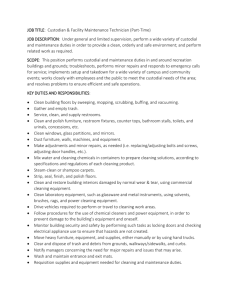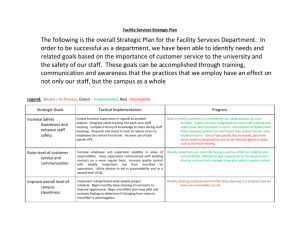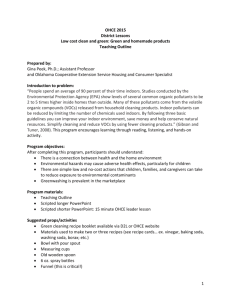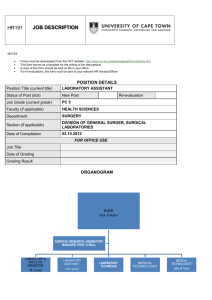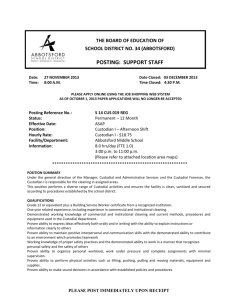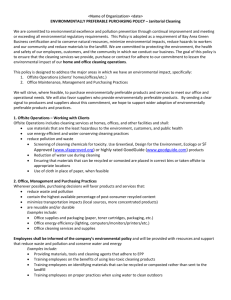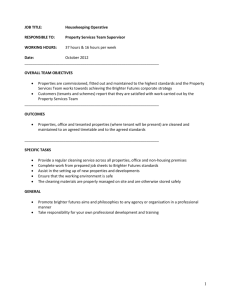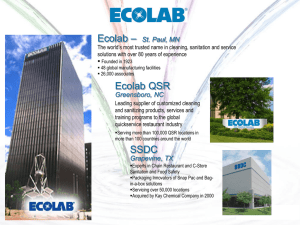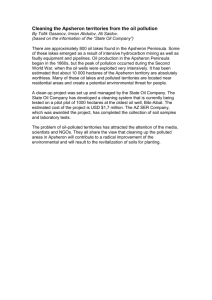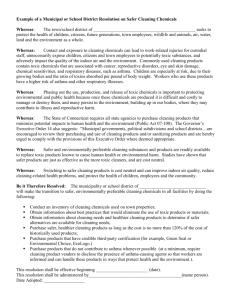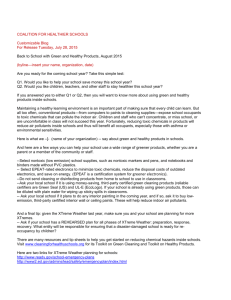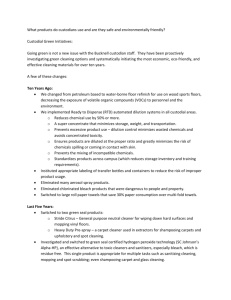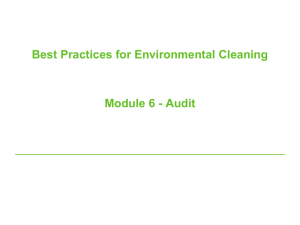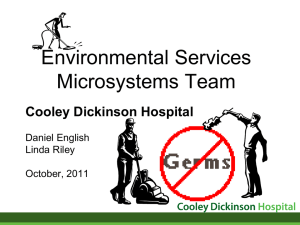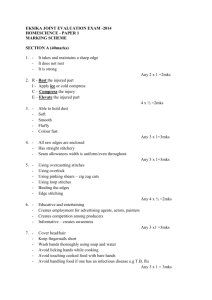School-based Committees - Cleaning for Healthy Schools Toolkits
advertisement
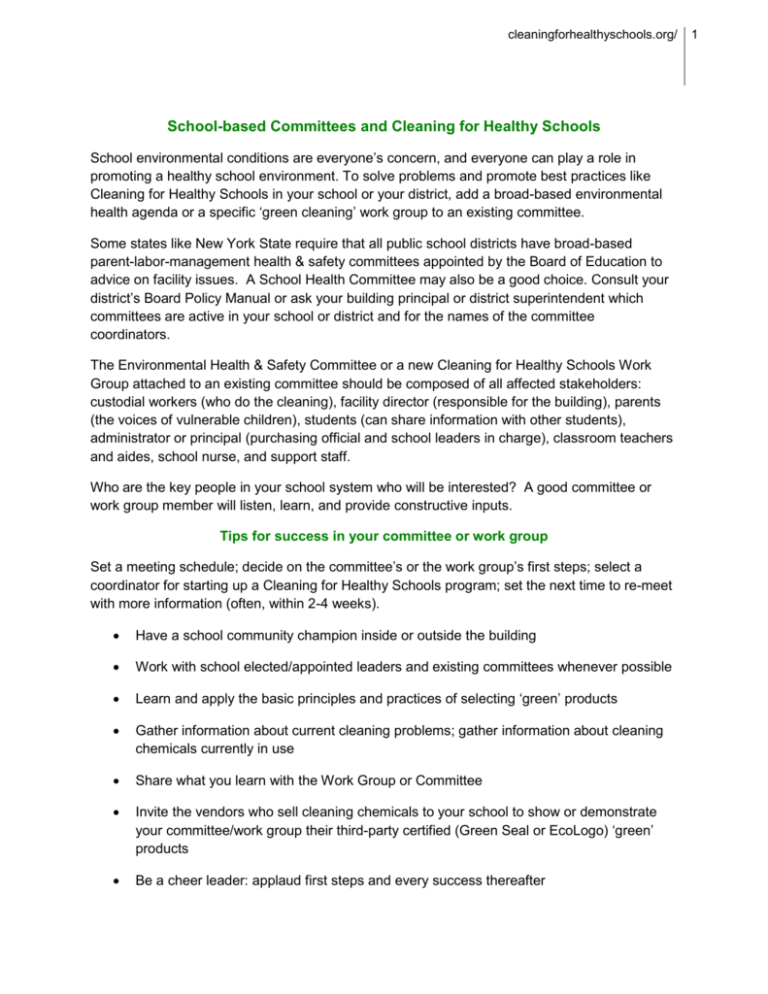
cleaningforhealthyschools.org/ School-based Committees and Cleaning for Healthy Schools School environmental conditions are everyone’s concern, and everyone can play a role in promoting a healthy school environment. To solve problems and promote best practices like Cleaning for Healthy Schools in your school or your district, add a broad-based environmental health agenda or a specific ‘green cleaning’ work group to an existing committee. Some states like New York State require that all public school districts have broad-based parent-labor-management health & safety committees appointed by the Board of Education to advice on facility issues. A School Health Committee may also be a good choice. Consult your district’s Board Policy Manual or ask your building principal or district superintendent which committees are active in your school or district and for the names of the committee coordinators. The Environmental Health & Safety Committee or a new Cleaning for Healthy Schools Work Group attached to an existing committee should be composed of all affected stakeholders: custodial workers (who do the cleaning), facility director (responsible for the building), parents (the voices of vulnerable children), students (can share information with other students), administrator or principal (purchasing official and school leaders in charge), classroom teachers and aides, school nurse, and support staff. Who are the key people in your school system who will be interested? A good committee or work group member will listen, learn, and provide constructive inputs. Tips for success in your committee or work group Set a meeting schedule; decide on the committee’s or the work group’s first steps; select a coordinator for starting up a Cleaning for Healthy Schools program; set the next time to re-meet with more information (often, within 2-4 weeks). Have a school community champion inside or outside the building Work with school elected/appointed leaders and existing committees whenever possible Learn and apply the basic principles and practices of selecting ‘green’ products Gather information about current cleaning problems; gather information about cleaning chemicals currently in use Share what you learn with the Work Group or Committee Invite the vendors who sell cleaning chemicals to your school to show or demonstrate your committee/work group their third-party certified (Green Seal or EcoLogo) ‘green’ products Be a cheer leader: applaud first steps and every success thereafter 1 cleaningforhealthyschools.org/ If the existing school leaders or existing committees are not interested, then employees should work through their representatives, and parents and other community members through parent groups or local environment/health groups to promote the issues. (Reference: School Health & Safety Committees: How to Promote Child and Adult Environmental Health Protection, Healthy Schools Network, Inc., © 2000, free online) 2



